Trip Report
We choose to go in the Vacas Valley Route as this is less populated and would allow us to get a full view of the mountain as we would essential come in from the south, travel up the west side and then down the NE side (which is the normal route). About 75% of the people go up the normal route, so we expected it to be less crowded. Another difference between th Vacas Valley and the Horcones Valley (normal route) is that the approach is longer on the Vacas Valley side — it takes 3 days to get to base camp (versus two).
The walk in was up the valley, through the grasslands along a stream/river. It was quite hot during the day, but much cooler at night and at times we got a sense of how fierce the winds would be and we learned early to stake down our tents well.
Each day, we would pack up our two duffles (each weighing about 30 kilos) with food and some hard gear (double plastic boots, ice axes, crampons) and leave them for the muleteer, who would then strap them to the mules and take off. The muleteers camped where we did, so we could count on getting into our food bags each day.
Eventually, we reached base camp. Now…. imagine the pictures you have seen of mountain base camps – yep, looks the same. Some structures that are there all season long and then all the hopeful climbers and their tents. Base camp seems exciting — but really it is boring as hell. You are sitting around waiting to climb. We got there fairly early on the 3rd day (keeping true to my desire to hike early in the morning before it gets too hot!), had a rest day the next day, then a carry day and then a rest day. So – we got there on the 3rd day and we would not be leaving again, really, until 8th day. Yep, that’s a long time.
There are 4 types of days in mountaineering. Here are my definitions:
- Carry days — you take as much stuff as you can – that you don’t need – and bring it up to your next camp. You have to be strategic though in case someone gets hurt or sick or weather comes in. For instance, you cannot bring up your tent, as you still need it down low. These days can be tough as you are still acclimating to the new elevation. But they also involved staying up the new elevation for a few hours (which for me, almost always involved a nap up high in the sun).
- Move days — the days you take all the rest of your stuff up to the next camp. These are usually permanent moves, such as from base camp to camp 1. Usually pretty exciting and usually faster than the carry day.
- Rest days — these are the most boring days in the world. you do….. literally…. nothing. I napped a whole lot on this expedition — like almost every day. But rest days, I pretty much spend the entire day in the tent, trying to nap, trying to stay out of the sun but getting way too hot in the tent. They would have been great days for a book…. if i had brought one….
- Summit days — these are the days you get up at some ungodly hour, like 2 in the morning, freezing, trying to boil water and keep yourself warm and then start walking slowly uphill for something like 7 hours. All for a summit. And then come back downhill for a few hours before passing out.
In any case, basecamp for us was a mix of rest days and carrys. It was good to get our systems figured out and eat, drink and acclimate. Here was where it was clear the difference between the classes. There were some people like us – going independently, without a guide. we were the ones with the big duffles, with bags that always looked full and did not have the most amazing meals on the mountain (tuna in a box, anyone?).
And then there were the guided groups. They were the ones who had people cook for them, went into the tents for dinner, had hot water delivered to their tents, and did not have to carry quite as much stuff up the mountain.
In any case, eventually it was time to move up to camp one. We were all mostly feeling well (Mike had some digestive stuff going on — though the tuna in the box seemed to be the culprit — it was pretty gross), so up we went from 4200m up to 5000m. All along, the weather was gorgeous — blue, clear skies every day. Not a cloud in sight and barely any wind.
Camp 1 definitely had a different feel — no services, people in transit or resting, no more real differences between people (unless your guide brought you hot water in the tent in the morning — but we tried to ignore that! :). Things just felt a bit more exciting.
After arriving at camp 1 – we had a carry day and then a move day. Camp 2 wasn’t too far — just another 450m (though of course 5450m is about 18,000 feet). Both our carry and moves went well – and we had amazing views of the mountain along the way. We also started our traverse from the west side of the mountain across to the north side where we would join up with the normal route. We also had some amazing views of the Polish Glacier which is suppose to be a pretty gnarly route up the mountain.
So – there we were at camp 2. We meet a guy, Grey, who was the only American in a group of Swiss. We spoke a bunch (we think he was lonely for english speakers!) and he let us borrow his sat phone (which I used to call Cody). We also asked him for weather information – as we figured the beautiful weather was not there to stay for long.
We carried up to camp 3, our high camp at 6000m (~20,000 feet) which went well for the most part. I was climbing really strong — made it from 5450 to 6000 in under 2.5 hours. Beth and Michael who had never been to such high elevations were struggling a bit more – plus Beth was coming down with a cold.
And then…. decision time. Basically, several groups decided to head up a day early (on the 12th) to try and summit on the 13th (even though the original plan was for the 14th like us). It was rumored that the weather on the 13th was going to be the best for awhile — clear skies and low winds. Our team discussed this and at first decided to go for it (which would mean missing a rest day at camp 2 and moving straight up to camp 3 the day after our carry day), but eventually it was decided that a rest day would be important to help Beth and Michael acclimate a bit better – so we stayed (along with just one other group).
The day everyone (else) moved up was cold, windy, and snowy. A few groups carried up to camp 2 and one solo person moved up to our camp – so now there were 3 parties in camp 2. That night, while we were cooking dinner — the 3rd solo party came over to ask for help with his stove which he could not get going. We let him use our stove that night and then next morning and we got to hear his story.
Turns out that Alberto (aka ‘the machine’) had come up to camp 2 from base camp. He is an Italian mountain guide — works in the Dolomites and Chamonix primarily. But, we called him the machine because four days after arriving in Argentina he was in camp 2 and on the 5th day he moved up to camp 3. Yep — that is pretty much no time for acclimating. In any case, Alberto pretty much adopted us and was with us for the rest of his time in Argentina.
But — back to the weather and camp 2. As I mentioned, we decided not to head up on the 12th to take advantage of the weather on the 13th. We had heard one report that said that the 14th would be clear (though all the other reports we heard said it would be windy). Unfortunately, the morning of the 13th, when we woke, it was clear with very low winds — which would have made for a great summit day.
In fact, when we arrived at the high camp later that day – we saw two Germans who had started the same day we had (but moved up their summit day to take advantage of the weather). They had just returned from the summit and gave us glowing reports of low winds and amazing views. We hoped our chance was next…..
On the evening of the 13th, we heard weather reports of clear mornings but high winds. But — it seemed to be our only chance. We could tell that our bodies were not doing well the longer we stayed at the high elevations (it is reported that the human body starts to deteriorate above 5000m). For instance, the 2 hours and 20 minutes it took me to climb the 450m up to high camp? The second time we did it for the move — it took me 3 hours and 20 minutes. The goal was to get faster, not slower…..
But — it was go time.
Beth and I woke up at 3 (Mike had opted not to join us as he was still struggling with the elevation) and we got dressed. Mike, amazingly, woke and helped us get hot water so we could hydrate and have something warm to drink. The icy winds were rattling the tent every couple of minutes and I was already shivering. We spent quite a bit of time looking for others who were awake (where the winds too high? we weren’t sure — but eventually we saw other headlamps).
Finally, just before 5, Beth and I started up the mountain. Alberto joined us for a bit – but not surprising, the elevation was affecting him and he had to head down. We were climbing strong and quickly caught up with a group in front of us. Within two hours we had climbed about 300m (your goal is to be traveling at least 80-100m per hour — so we were doing really well). But the winds…. the winds were fierce and biting and sometimes almost knocked us off our feet. Our faces were at risk of freezing. My toes and fingers were cold (and I was wearing 6 layers on top – but had my big puffy in my bag as a backup). At times, we could see the wind heading our way (as it picked up snow) and we would lower our heads, prepared for the onslaught, but still almost got knocked over. It was rough.
Though we were the first to turn around, many others came down later that morning. though the sun was coming up, we knew that the winds were suppose to get even worse later in the day. It took us about an hour or so in our bags to warm up. The rest of the day was spent in tents, staying warm and eating food. Alberto decided to try for the next day (he was ultimately successful) but at that point we had been above 5000 for about 5 or 6 days — our bodies were tired.
And so, on day 14 of being on the mountain (on Feb. 15th) we headed down the mountain. It was a long scree field — but with plastic boots on I could make it down in about 3 hours. We went from 6000m down to base camp at 4300m. It was strange to head down to so many people (on the normal route — which I would never recommend) but our trip was over. The following day, we hiked the 7 hours (16 miles) out to the road and then caught a bus back to Mendoza.
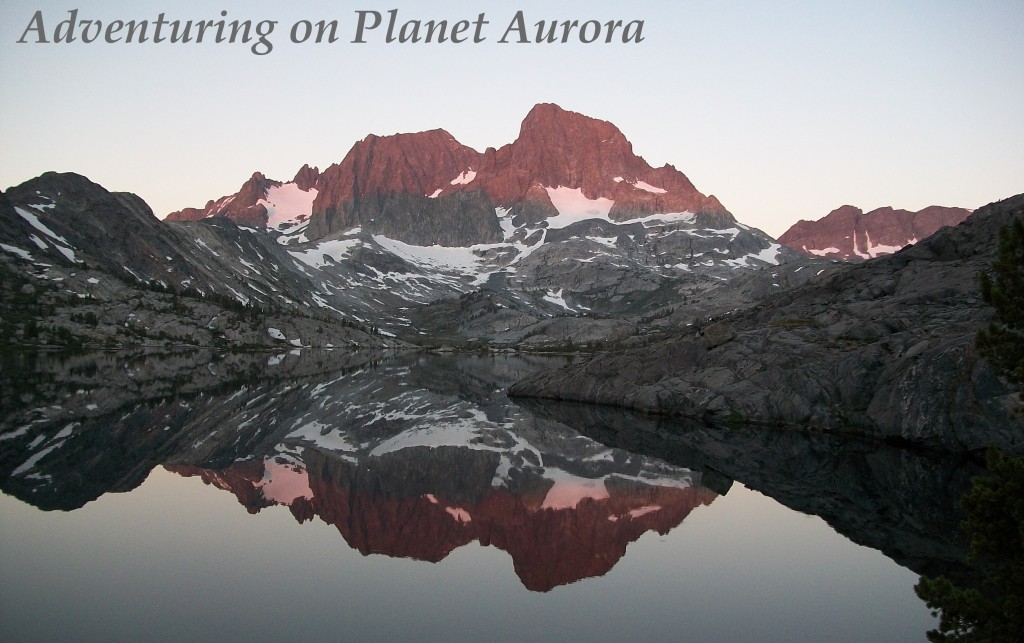
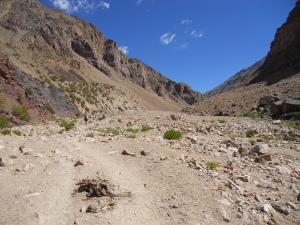
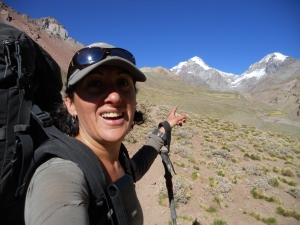
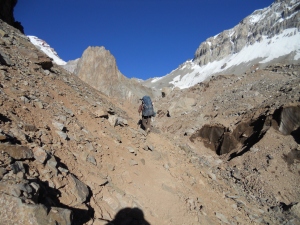
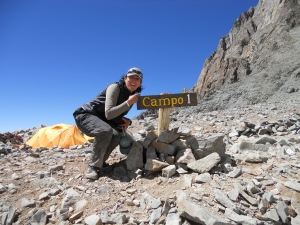

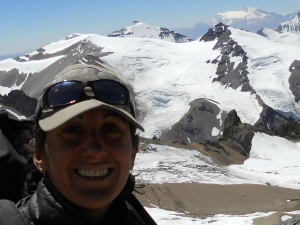
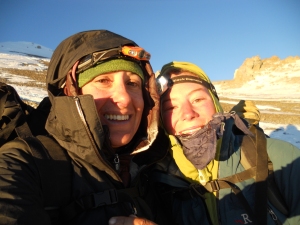



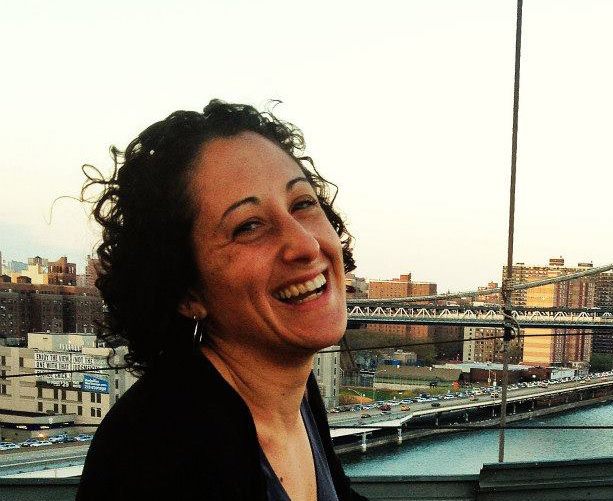
Hey, whether or not you made it to the top, as you had supposed you would, you still had a great experience and learned a good deal about how to be successful on your next endeavor. What is important, as you are well aware, is that you and your friends made it back safely!
I agree–it’s the process, the trip, and not always the end result. This sounds like an amazing adventure. Wow. You ought to write a book about it.
ha! mom – that is your response to everything! 🙂
I agree, Aurora — it’s the journey that counts. You can always go again one day, but I bet you’ll realize you don’t need to. You’ll look back on this and see how rewarding it was in other ways. I’m so very impressed by all you’re doing — whether you summit or not. xoxoxoxo
thanks maria! xoxoxo
Knowing when to turn around is a good life skill to have obtained. The mountain will always be there for you! Thanks so much for the trip report, so that the reat of us can live vicariously through you. All our love, Ed & Hillary
I am so proud of you and the challenges that you have undertaken. I hope it’s OK with you…I forwarded your blog to my Spanish teacher to share with our class. I was thinking that your experiences could teach the 18-year-olds in my class something from afar….like it’s the process that counts…like how true motivation in intrinsic….like it’s OK to disturb the universe…I sing your praises to anyone who will listen:) What’s next? (Believe me, trying to learn Spanish will make Aconcagua look like cake!
ha! thanks mary lou — of course yo ucan share it! and you should not say that it is harder to me…… i am already nervous as is…..
You. are. awesome.